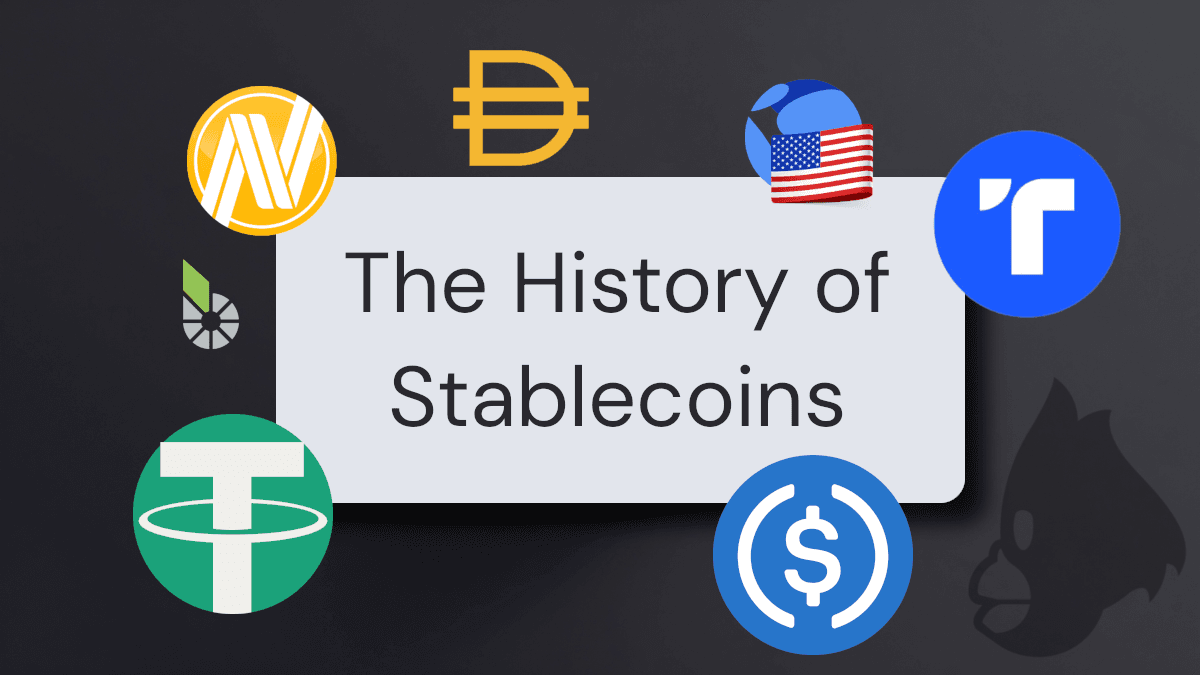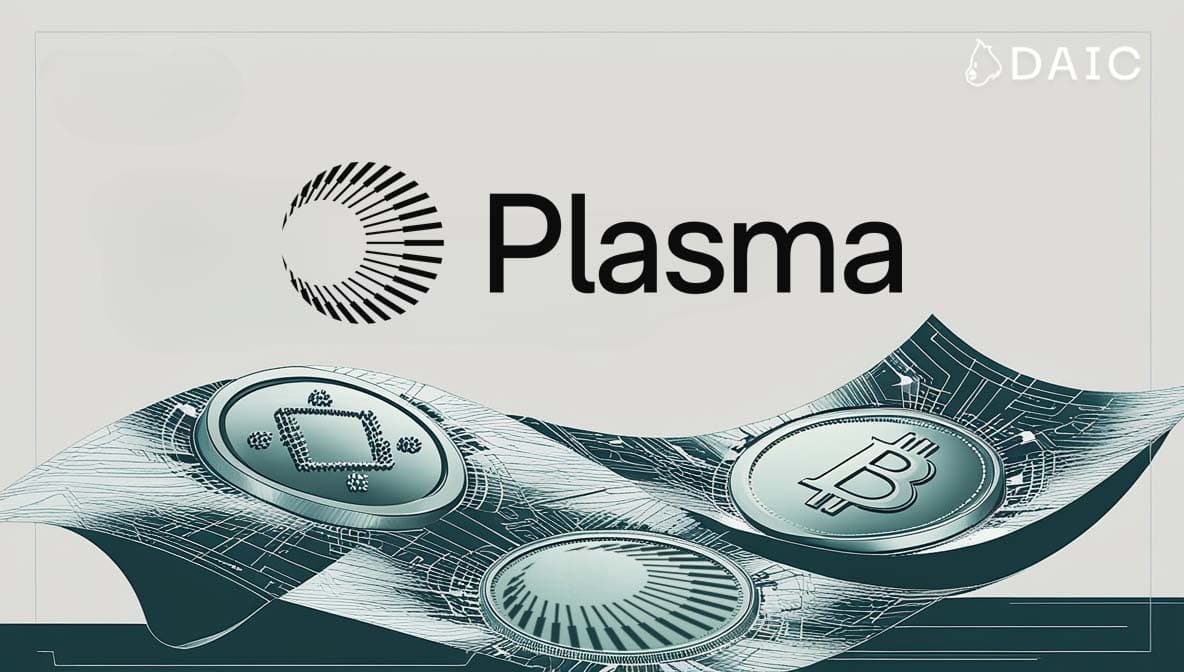Stablecoins are no longer a niche corner of crypto — they’ve become the backbone of digital finance. These tokens, designed to hold stable value (usually $1), now move trillions of dollars annually, power DeFi protocols, and are being woven into mainstream payment systems by companies like PayPal, Stripe, and Google. If you’re new to the space, you may want to start with our earlier post: The History of Stablecoins. It explains how the idea began and why stability became essential in crypto.
Key Takeaways
- The main types of stablecoins — both traditional and next-generation.
- How they actually work (with up-to-date reserve details).
- Key functions stablecoins serve in today’s markets.
- Risks and the future outlook as regulation and adoption evolve.
What Defines a Stablecoin
For a token to count as a stablecoin, it must deliver price stability. Three features determine that:
- Peg Mechanism: How the token maintains its target value (e.g., $1). Options include collateral reserves, over-collateralization, or algorithmic supply rules.
- Collateral Model: What backs the coin: fiat cash, U.S. Treasuries, crypto, commodities, or tokenized real-world assets.
- Transparency and Governance: Whether issuers disclose reserves, undergo audits, and how much trust users must place in centralized custodians or decentralized protocols.
Every stablecoin model is a different trade-off among stability, decentralization, trust, and efficiency.
Why Stablecoins Matter
Stablecoins serve as the connective tissue between crypto and traditional finance. Their importance has grown because they:
- Enable trading & liquidity: They’re the default quote currency on most crypto exchanges.
- Simplify payments & remittances: Sending USDC or USDT globally can be faster and cheaper than traditional rails.
- Provide financial inclusion: In countries with unstable currencies, digital dollars offer stability and savings protection.
- Bridge TradFi and DeFi: They let institutions, fintechs, and DeFi protocols transact in a common unit.
- Attract regulators & institutions: BlackRock, Franklin Templeton, and PayPal are all now in the game.
Types of Stablecoins
Stablecoins aren’t all the same. Here’s the landscape in 2025, with traditional categories first, then the new wave.
Fiat-Backed (Cash & Cash-Equivalent) Stablecoins
These tokens are redeemable 1:1 for fiat and hold reserves in cash and short-term U.S. Treasuries.
- USDT (Tether): Backed by cash & cash equivalents, with the majority in U.S. Treasuries (direct + indirect holdings). Attestations confirm over $127B in Treasuries as of Q2 2025.
- USDC (Circle): Backed by cash at banks + the Circle Reserve Fund (USDXX), a BlackRock-managed government money market fund holding Treasuries, repos, and cash.
- PYUSD (PayPal USD): Issued by Paxos Trust, backed by U.S. dollar deposits, T-bills, and cash equivalents, regulated by NYDFS.
✅ Strengths: Stability, regulatory oversight, deep liquidity.
❌ Weaknesses: Centralized custody, dependence on banks, subject to regulatory pressure.
Crypto-Collateralized Stablecoins
These use volatile crypto as collateral, usually over-collateralized.
- DAI (MakerDAO): Once purely ETH-backed, now includes crypto + tokenized RWAs (like T-bills) for stability.
- LUSD (Liquity): Backed only by ETH, with strict over-collateralization.
✅ Strengths: Decentralization, on-chain transparency.
❌ Weaknesses: Collateral volatility, risk of liquidation cascades.
Algorithmic / Elastic-Supply Stablecoins
These rely on rules, not reserves.
- Ampleforth (AMPL): Expands or contracts supply (rebasing) to target $1.
- TerraUSD (UST): A cautionary tale, collapsed in 2022 when its algorithmic peg broke, erasing $40B+.
✅ Strengths: Capital efficient, decentralized design.
❌ Weaknesses: Fragile under stress, loss of confidence can trigger death spirals.
Derivatives-Based Synthetic Dollars
These mimic $1 value using hedged derivatives positions.
- USDe (Ethena): Uses a delta-neutral strategy: long staked assets + short perpetual futures. Peg stability depends on derivatives liquidity and funding markets.
✅ Strengths: No reliance on banked fiat reserves.
❌ Weaknesses: Complex, reliant on exchange health and derivatives funding.
Commodity-Backed Stablecoins
Pegged to tangible assets like gold.
- PAX Gold (PAXG): Each token equals 1 troy ounce of London Good Delivery gold, custodied by Paxos.
- Tether Gold (XAUt): 1:1 backed by allocated physical gold in Swiss vaults.
✅ Strengths: Hedge against fiat inflation.
❌ Weaknesses: Limited adoption, redemption only in bar sizes.
Tokenized Fund Shares (Stablecoin-Like, But Different)
Not stablecoins in the strict sense — but used like them in DeFi.
- BlackRock BUIDL: Tokenized liquidity fund investing in Treasuries & repo. Yield accrues on-chain.
- Franklin Templeton BENJI: Tokenized U.S. Government Money Fund.
✅ Strengths: Transparent, regulated, yield-bearing.
❌ Weaknesses: Legally fund shares, not $1-redeemable payment tokens.
Yield-Bearing Stablecoins
These pass Treasury yield to holders.
- USDY (Ondo): Backed by Treasuries & deposits, yield accrues via an increasing redemption value.
- USDM (Mountain Protocol): Bermuda-regulated, passed yield via daily rebases. Now winding down (primary market closed Aug 2025).
✅ Strengths: Attractive to holders.
❌ Weaknesses: Possible securities classification; liquidity & jurisdictional limits.
Hybrid / Fractional Models
Blend collateral + algorithm.
- FRAX: Fractionally collateralized, partially algorithmic.
✅ Strengths: Efficient capital use.
❌ Weaknesses: Complexity, peg risks.
Protocol Dollars
On-chain “synthetic dollars” minted via debt mechanisms.
- sUSD (Synthetix): Minted against SNX debt pool, no fiat reserves.
✅ Strengths: Purely crypto-native.
❌ Weaknesses: Peg depends on protocol health, not redemption.
Next-Gen Entrants (2025)
- STBL (Stable): Duo-token system: USST (payments stablecoin) + YLD (yield token), plus neobank features.
- Plasma: Layer-1 chain + neobank rails for stablecoin payments. Not itself a $1 coin.
- Stripe: Offers stablecoin financial accounts (using USDC, etc.), but not issuing its own coin.
- Google (AP2): Agent Payments Protocol for AI apps, includes stablecoin rails (USDC, PYUSD, RLUSD). Not issuing a coin.
CBDCs (Stablecoin-Adjacent)
Central bank digital currencies behave like stablecoins but are state-issued.
- e-CNY (China), Digital Euro pilot, Sand Dollar (Bahamas).
✅ Strengths: Sovereign backing.
❌ Weaknesses: Privacy concerns, geopolitical risk.
Key Functions of Stablecoins
Across all categories, stablecoins serve as:
- Medium of Exchange – For everyday payments, remittances, P2P transfers.
- Store of Value – Dollar stability in volatile or inflationary markets.
- Unit of Account – Pricing in DeFi, smart contracts, and NFT marketplaces.
- Liquidity Layer in DeFi – Collateral for lending, borrowing, and yield farming.
- On-Ramp / Off-Ramp – Gateway between fiat and crypto ecosystems.
- Financial Inclusion Tool – Access to stable digital dollars without bank accounts.
-
Next-Gen Functions:
- Yield accrual (USDY, STBL).
- AI payments (Google AP2).
- Embedded banking (Plasma One, Stripe).
Risks and Challenges
- Peg Instability: As seen with UST, design flaws can trigger collapse.
- Collateral Risks: Crypto collateral is volatile; RWAs carry interest rate and liquidity risk.
- Centralization: Fiat-backed coins depend on banks and issuers.
- Smart Contract Bugs: For crypto-native stables.
- Regulatory Pressure: MiCA (EU) and the GENIUS Act (U.S.) are reshaping compliance.
- Systemic Risk: DeFi depends heavily on stablecoins; a de-peg can cascade.
Future Outlook
- Regulation: MiCA in the EU and the GENIUS Act in the U.S. favor transparent, fiat- and RWA-backed models.
- RWA Expansion: More Treasuries and real-world assets moving on-chain.
- Infrastructure Growth: Plasma and other purpose-built stablecoin chains.
- Tech Integration: PayPal, Stripe, and Google embedding stablecoin payments.
- CBDC Coexistence: Stablecoins and CBDCs will likely compete and complement each other.
Stablecoins are evolving from “crypto utilities” into global financial infrastructure.
Conclusion
Stablecoins started as simple dollar tokens. Today, they include fiat-backed giants like USDT/USDC, crypto-collateralized models like DAI, yield-bearing newcomers like USDY, and tokenized fund shares like BUIDL. Even tech companies and governments are entering the mix.
Their functions span trading, payments, DeFi, and financial inclusion. But risks remain — from peg failures to regulatory pressure.
As stablecoins diversify, one truth remains: they are the bridge between traditional finance and the digital economy. The question isn’t whether they’ll matter — it’s which models will win as the world embraces tokenized money.
The information provided by DAIC, including but not limited to research, analysis, data, or other content, is offered solely for informational purposes and does not constitute investment advice, financial advice, trading advice, or any other type of advice. DAIC does not recommend the purchase, sale, or holding of any cryptocurrency or other investment.


